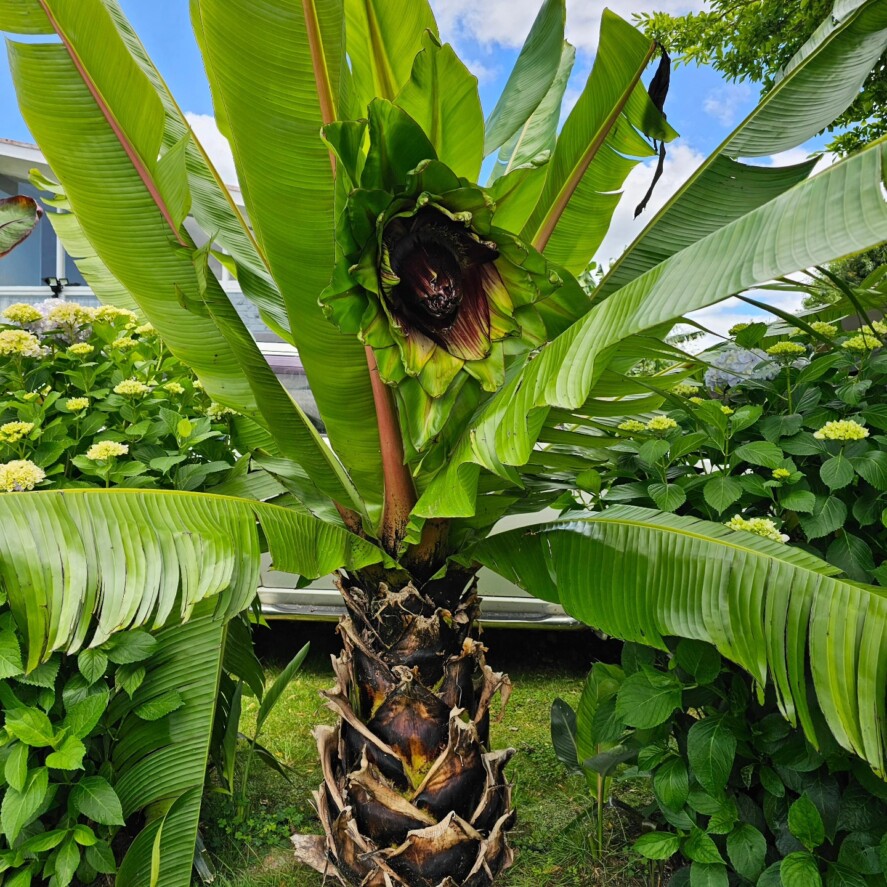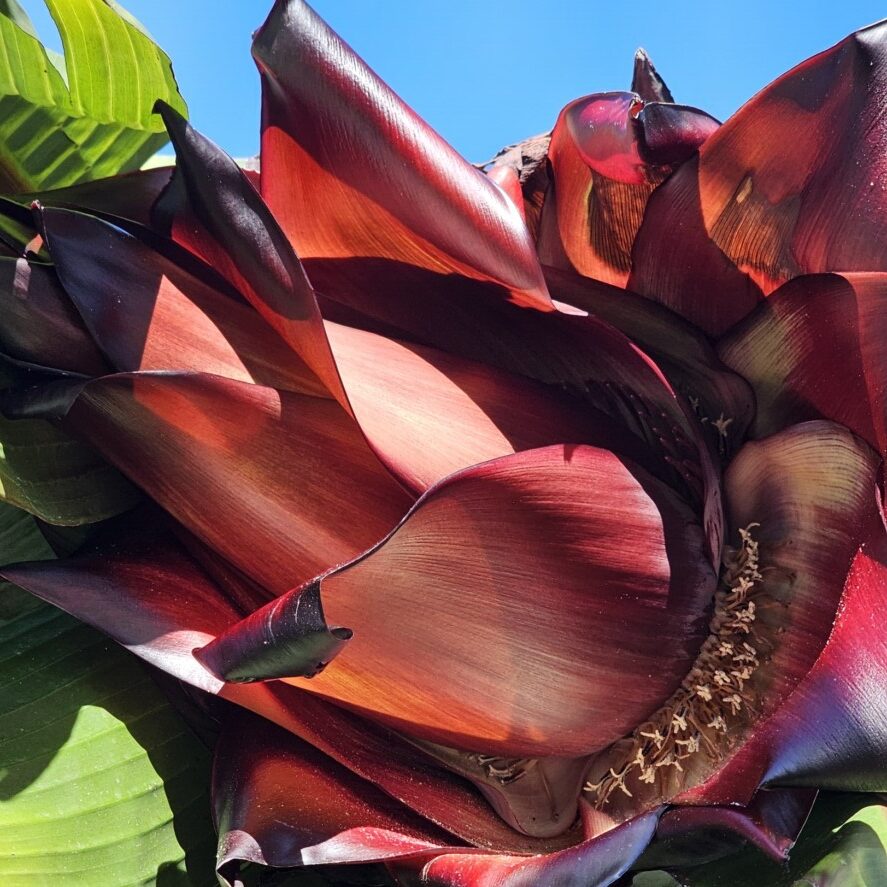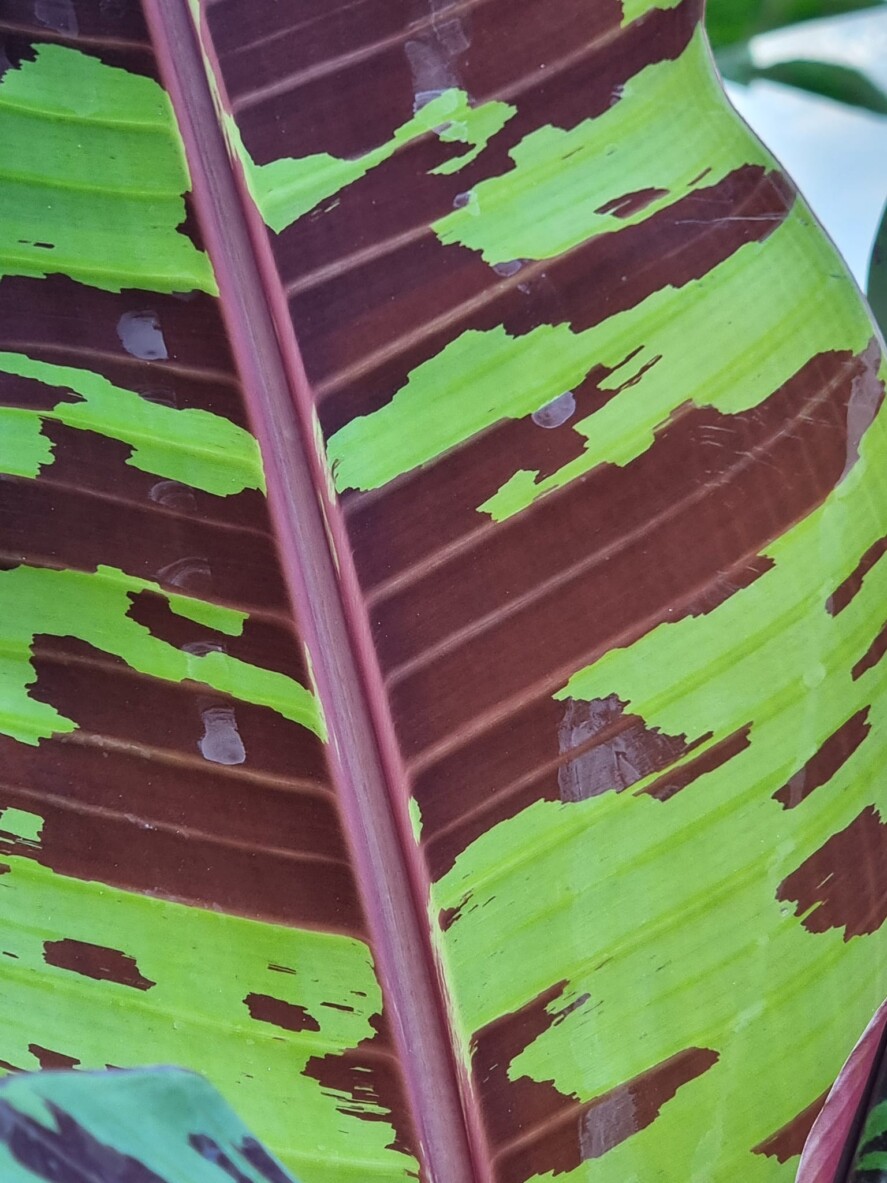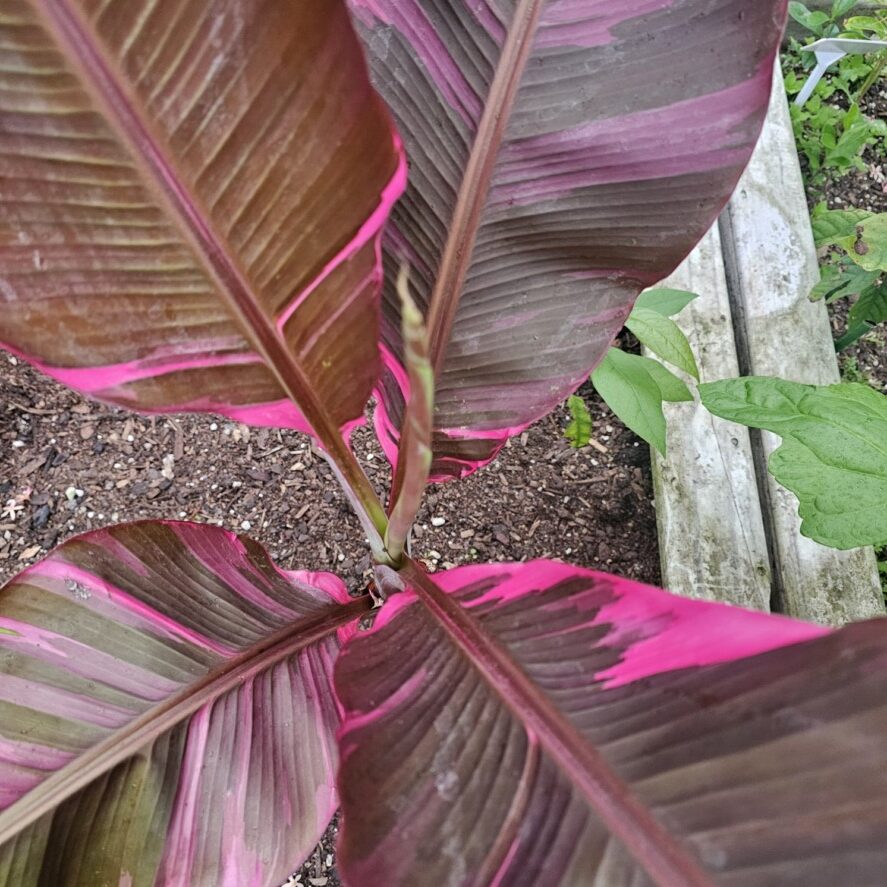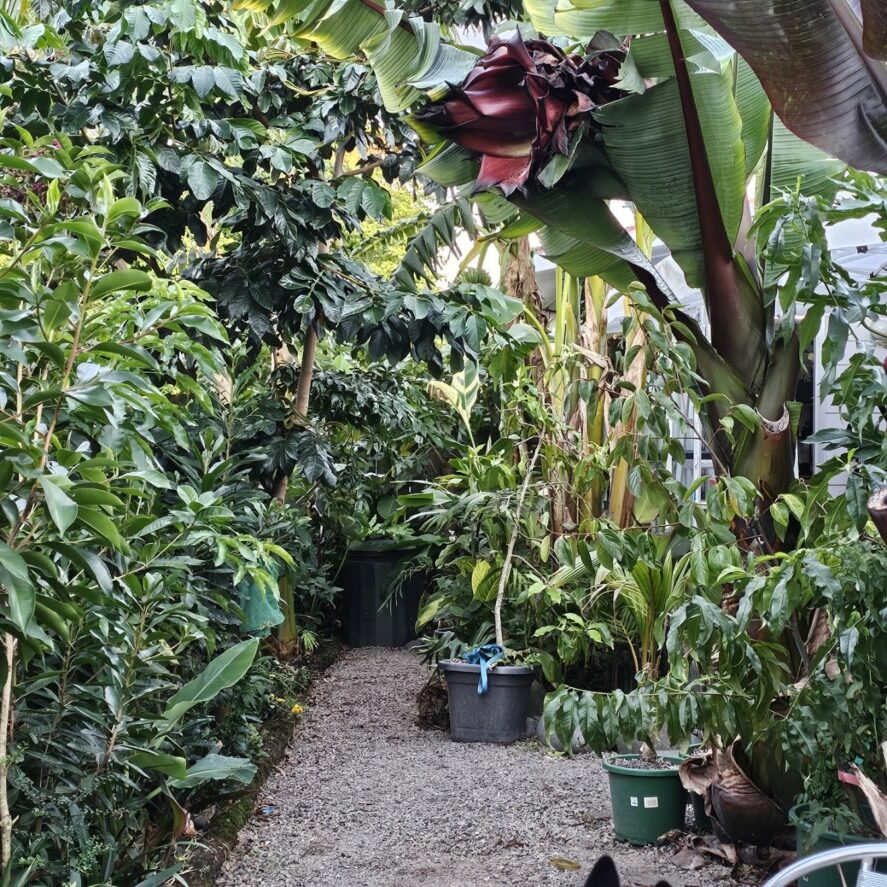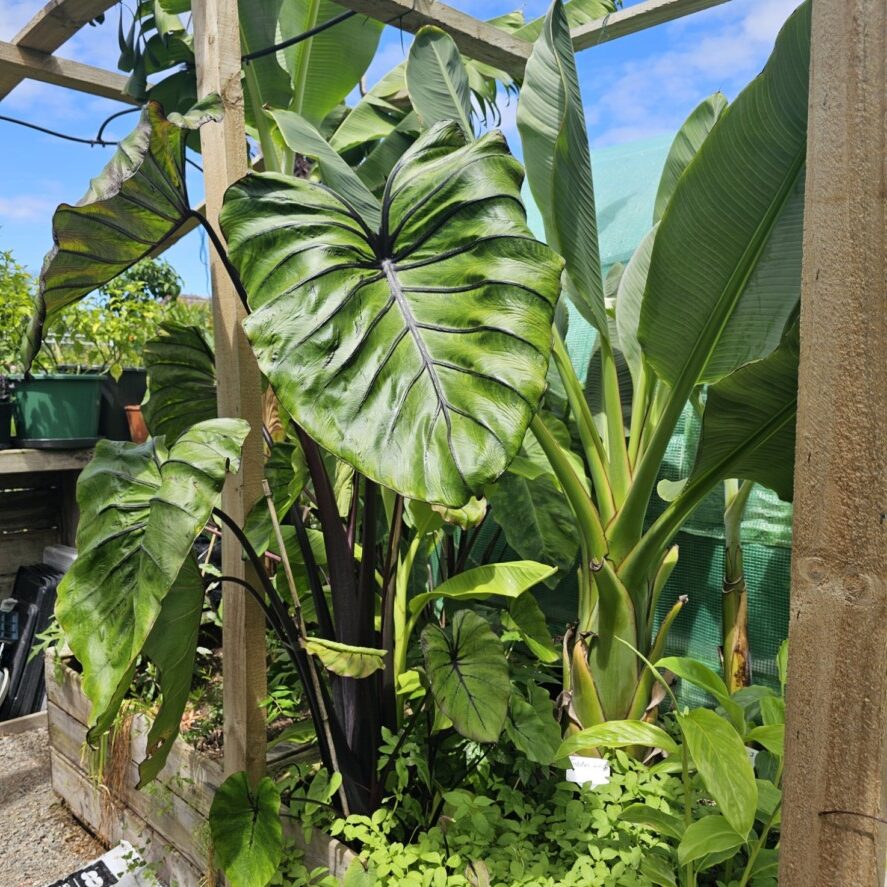-
Troppo Plant & Garden Articles
- Te Puke Region
- TROPPO’s Food Forest in Te Puke, BOP (www,foodforest.org.nz)
- Troppo’s Plant Collection
- TROPPO's Nursery Directory
- Food Forests of New Zealand (www.foodforests.nz)
- Nursery Map - Plant Suppliers of NZ Directory (www.nurserymap.nz)
- Kids Garden Corner
- New Zealand Garden Bird Survey
- New Zealand Garden Groups
- Delicious Recipes
Banana ‘Musa Coccinea’ – The Scarlet Banana with Exotic Flowers
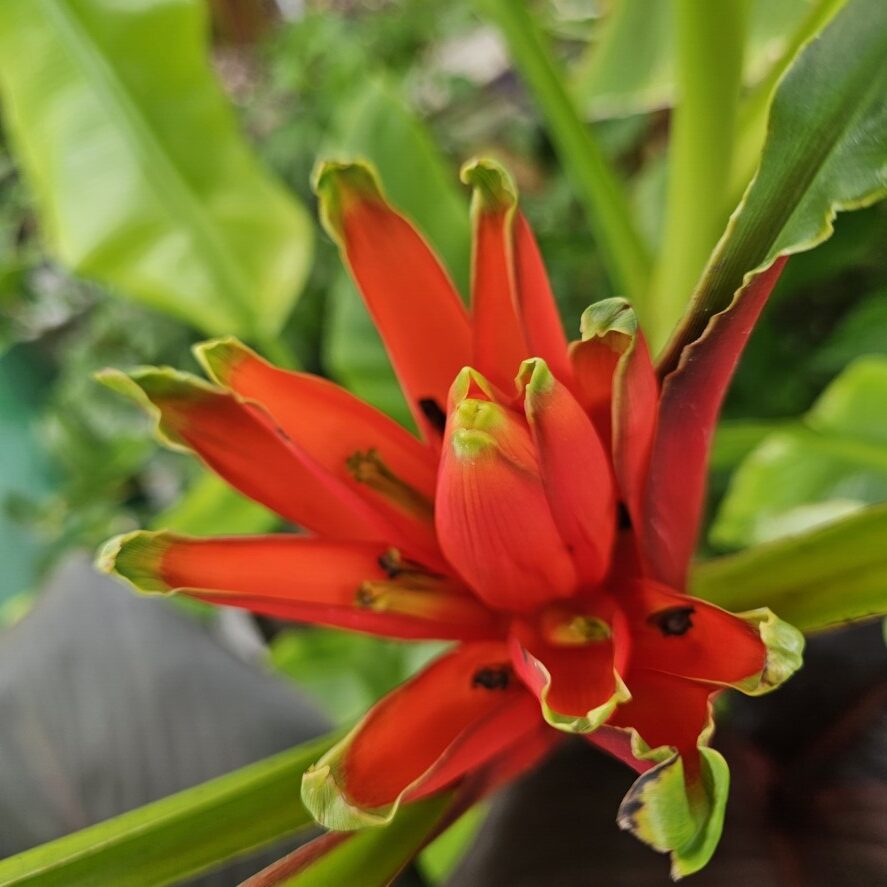
Many tropical fruit enthusiasts might be intrigued by the stunning Banana ‘Musa Coccinea’, commonly known as the Scarlet Banana. This remarkable plant not only produces edible fruit but also boasts striking red and orange flowers that can enhance any garden or landscape. As you research into the world of ‘Musa Coccinea’, you’ll discover its unique characteristics, growing requirements, and fascinating uses, making it a valuable addition to your botanical repertoire. Get ready to explore the beauty and utility of this exotic banana variety.
Botanical Description
The Banana ‘Musa Coccinea’, commonly known as the Scarlet Banana, is a striking plant native to tropical regions. Its unique features include large, lush leaves that can reach several feet in length, providing an attractive backdrop for its vibrant inflorescences. The fruit, characterized by its bright scarlet color, adds to the plant’s exotic appeal and is a spectacle that catches the eye of any tropical enthusiast.
Plant Characteristics
By studying the plant, you’ll find that its height varies from 10 to 15 feet, making it an impressive addition to gardens. The stems are robust and can support the weight of its large leaves, while the overall structure is quite sturdy. This banana variety thrives in well-drained soil, requiring regular watering and adequate sunlight to flourish.
Flower Morphology
Plant morphology of Musa Coccinea’s flowers is one of its most fascinating traits. The inflorescences emerge from the leaf axils and are quite large, showcasing a radiant mix of red, yellow, and green hues. Each flower is not only visually stunning but also plays a critical role in attracting pollinators, enhancing your garden’s biodiversity.
Hence, wildlife can flourish in your garden as the striking flowers of Musa Coccinea will beckon an array of pollinators. The bracts have an elongated shape that intermingles with the flowers beautifully, creating a stunning visual display. With a robust flower structure, each blossom is designed to open sequentially, ensuring an extended blooming period. This not only enhances the visual allure but also promotes pollen transfer among the flowers, supporting the ecological balance in your outdoor space.
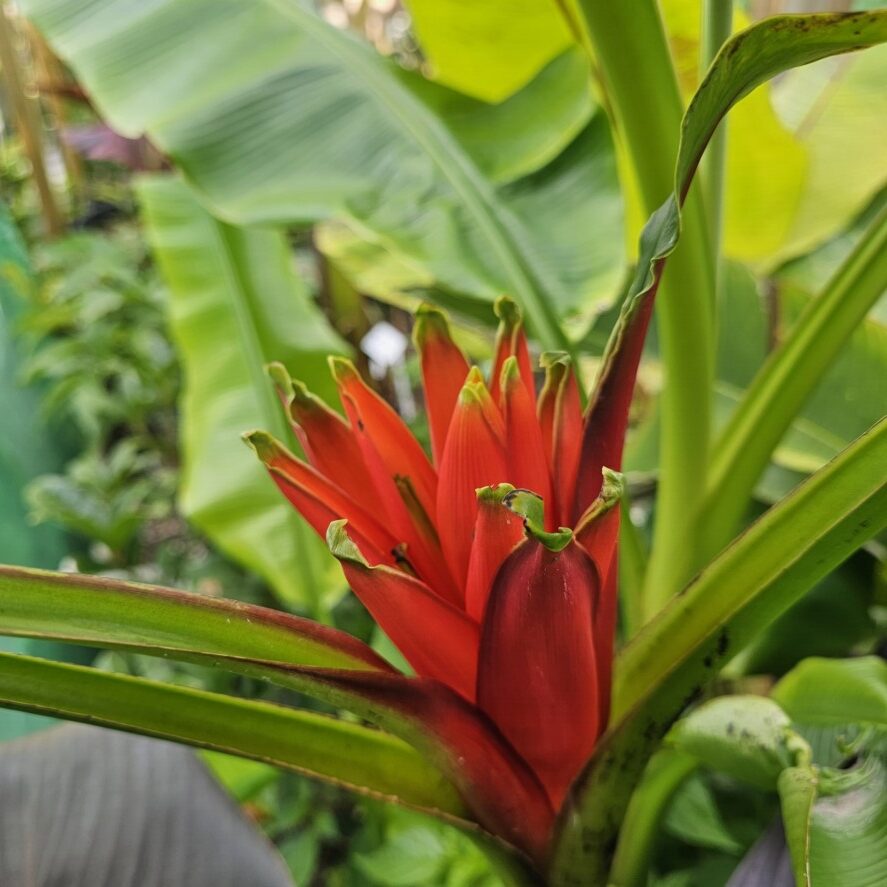
Natural Habitat and Distribution
It thrives predominantly in the tropical regions of Southeast Asia, where it flourishes in the lush, humid environments alongside other exotic flora. You will find the scarlet banana predominantly in countries like Malaysia, Indonesia, and the Philippines, where its vibrant flowers contribute to the rich biodiversity. Its natural habitat also includes moist, well-drained soils that allow for optimal growth and fruit development, ensuring that this banana variety remains an alluring feature of local ecosystems.
Geographic Origin
On the lush landscapes of Southeast Asia, the scarlet banana, known scientifically as Musa coccinea, originates from tropical climates that provide ideal conditions for its vibrant growth. It has adapted to thrive in this diverse region, showcasing its colorful flowers as a natural attraction.
Growing Conditions
Around your garden, the scarlet banana prefers warm, humid conditions similar to its native habitat. You should provide plenty of sunlight, ideally six to eight hours per day, and ensure that the soil is rich in organic matter to support its growth. Maintaining consistent moisture levels will enable your scarlet banana to flourish, creating a lush environment conducive to its unique flowering.
Also, it is important to consider that the scarlet banana benefits from sheltered locations to protect it from strong winds. You might want to plant it in well-draining, fertile soil, and regular watering will help mimic its natural humid habitat. Fertilizing during the growing season can promote healthy foliage and encourage the production of its showy flowers, making it a beautiful addition to your tropical garden.
Cultivation Requirements
One of the key aspects of growing the Scarlet Banana is understanding its specific cultivation requirements. Ensure you provide ideal conditions to promote strong growth and vibrant flowering.
Climate and Temperature
At the heart of successful Scarlet Banana cultivation is a warm, tropical climate. Below is a table detailing the ideal conditions:
Climate Requirements
| Temperature Range | 25°C to 30°C (77°F to 86°F) |
| Humidity Level | 60% to 80% |
| Sunlight | Partial shade to full sun |
Soil and Water Needs
Any successful growing endeavor for the Scarlet Banana necessitates well-draining soil that retains some moisture. An ideal pH level for the soil falls between 5.5 to 7.0.
Cultivation of your Scarlet Banana requires you to consistently monitor soil moisture. Water the plant thoroughly and ensure that excess water drains away to prevent root rot. Incorporating organic materials into your soil can enhance drainage and provide imperative nutrients, promoting vibrant growth and flowering. By creating the right soil environment, you set the stage for a thriving Scarlet Banana plant.
Ornamental Value
Despite its name, the Scarlet Banana, or Musa coccinea, is not just about delicious fruit. This striking plant boasts large, glossy leaves and vibrant red inflorescences, making it a stunning focal point in any garden. The unique appearance of its flowers adds an exotic charm that enhances your landscape, attracting attention and admiration from friends and neighbors alike. Your garden will benefit from the lively visual interest created by this ornamental gem.
Landscape Applications
Along with its striking beauty, Musa coccinea fits well into a variety of landscape settings. You can use it as a bold statement plant in tropical-themed gardens, or as a dramatic backdrop for flowering annuals. Its eye-catching red flowers act as a perfect counterpoint to greens and other more muted colors, enabling you to create dynamic color contrasts in your outdoor spaces.
Container Growing
Growing Musa coccinea in containers is an excellent way to enjoy its beauty on patios or balconies. This approach also allows you to control the plant’s growth, making it a versatile option for smaller spaces without sacrificing aesthetic appeal.
Consequently, using containers for your Scarlet Banana can enhance your gardening experience. Choose a large pot with sufficient drainage to accommodate the plant’s root system and provide stability. Regularly water and fertilize to keep the plant healthy, and you can easily relocate it to capture the best sunlight or protect it from harsh weather. Container growing gives you the flexibility to showcase this exotic banana wherever you wish, ensuring that its stunning flowers are always within your sight.
Care and Maintenance
Unlike other banana varieties, the Scarlet Banana requires specific attention to thrive in your garden. Ensure it is planted in well-draining soil, receiving a good amount of sunlight while being shielded from harsh winds. Regular watering is vital, but you should allow the top layer of soil to dry before the next watering, as soggy roots can lead to issues. Providing adequate spacing will promote proper air circulation, reducing the risk of disease.
Fertilization and Pruning
Among the best practices for maintaining your Scarlet Banana is a balanced fertilization routine. You can use a high-potassium fertilizer every couple of months during the growing season to encourage healthy foliage and vibrant blooms. Pruning is equally important; remove any dead or damaged leaves to promote airflow and reduce disease vulnerability.
Pest and Disease Management
The management of pests and diseases is integral to the growth and health of your Scarlet Banana. Keeping an eye out for common pests like aphids and spider mites will allow you to act promptly, using insecticidal soap or neem oil when necessary. Additionally, diseases such as root rot and leaf spot can be mitigated through proper watering techniques and ensuring adequate air circulation.
Fertilization plays a significant role in the prevention of diseases, as well-fed plants tend to be stronger and more resilient. Ensure you’re using organic fertilizers that provide vital nutrients without harming beneficial soil microbes. Regularly inspect your plants for signs of distress, such as yellowing leaves or unusual growth patterns, and address these issues promptly to maintain their health.
Propagation Methods
To grow your own Scarlet Banana, you can utilize various propagation methods. The two most common approaches are division and offsets, as well as seed propagation. Each method has its own set of advantages, allowing you to choose the best option for your gardening plans.
Division and Offsets
Offsets are small plants that develop at the base of the parent banana plant. You can carefully separate these offsets once they reach a size of six inches or more, ensuring each one has roots intact. Plant them in a well-draining medium, and you’ll soon have new Scarlet Banana plants thriving in your garden.
Seed Propagation
Methods for seed propagation can be more challenging but rewarding. If you are interested in growing Scarlet Bananas from seeds, you’ll need to obtain fresh seeds from the fruit. These should be cleaned and soaked in water for 24 hours before planting them in a seed-starting mixture. Keep the soil moist and maintain warm temperatures for the best chances of germination.
But starting from seeds can take longer than other methods, as it may take several months for your seeds to sprout. Additionally, be aware that seedlings may not always exhibit the same characteristics as the parent plant. This method, while less common, adds an element of excitement to your gardening journey as you watch your plants develop from the very beginning.
Summing up
Ultimately, as you explore the unique characteristics of the Banana ‘Musa Coccinea’, or Scarlet Banana, you’ll appreciate its vibrant exotic flowers and lush foliage. This captivating plant not only adds a striking visual element to your garden but also thrives in well-draining soil and warm temperatures, making it an ideal choice for tropical and subtropical environments. By incorporating the Scarlet Banana into your landscape, you can elevate your outdoor space with its stunning beauty and exotic charm.

